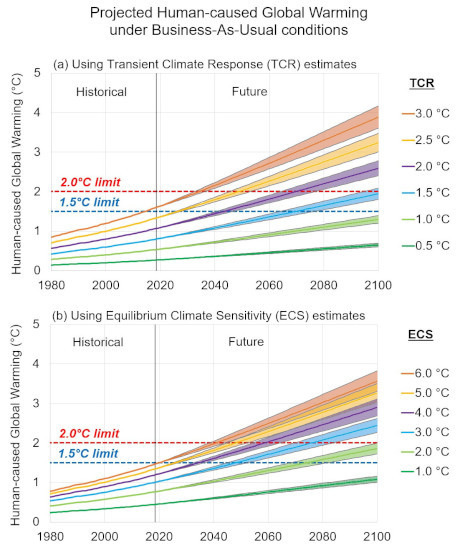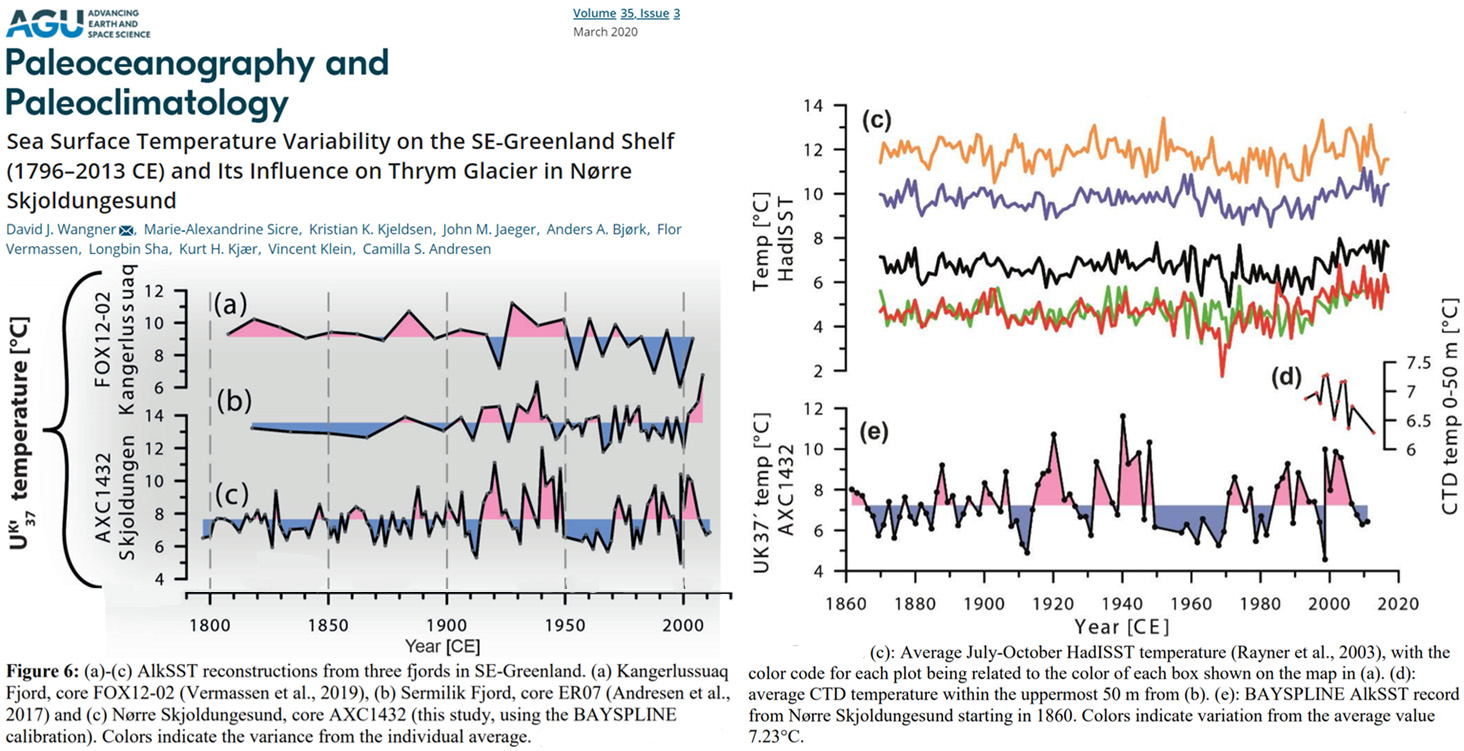- Joined
- Jan 28, 2013
- Messages
- 94,823
- Reaction score
- 28,342
- Location
- Williamsburg, Virginia
- Gender
- Male
- Political Leaning
- Independent
I think the main reason why climate alarmists have become so loud and strident lately is because they are aware (even if only subconsciously) how insubstantial is the actual data case for the extreme measures they advocate. A new paper explains this in some detail.

How much human-caused global warming should we expect?
By Andy May OMG! The world is going to end, and we caused it. This story, in one form or another, goes back to biblical times. According to Genesis (6:9 to 9:17) God decided that humans had sinned too much and must be punished, so he called up a great flood to destroy the world.…
38 mins ago March 21, 2020 in Climate News, IPCC AR5 Report.
". . . Connolly, Connolly, Carter and Soon have written a new paper (Connolly, et al. 2020) examining the IPCC predictions the UNFCCC used to construct the Paris Agreement. We will refer to their paper as “C3S20.” While the paper has just been published, it has been a work-in-progress for some time. Dr. Robert M. Carter passed away on January 19, 2016, but he did a considerable amount of work on an earlier version of the paper.
C3S20 asks, how much human-caused warming will occur if we do nothing, that is, continue “business-as-usual?” It’s unfortunate, but the IPCC, for all their work, do not adequately answer that question, their projections are all based on abstract “scenarios.”. . .
As we see by reading C3S20, the 2.0°C limit idea in the UNFCCC Paris Agreement is very flawed. The agreement does not define the preindustrial starting point, either as a temperature or a greenhouse concentration. It is not even defined in time. The effect of human-emitted greenhouse gases is not known accurately enough. This is clearly seen in Figure 2. The error in warming estimates for 2020, is larger than the total surface warming since 1850. Finally, there have been no observed problems with warming or greenhouse gas emissions. The net impacts of warming and higher greenhouse gas concentrations have been positive to date according to the economists that have studied the issue. Further, the impacts are likely to remain positive for some time to come.
The 2.0°C limit is arbitrary and subjective (Mahony 2015) and has no starting point. There is no way to accurately project the effects of the emissions the UNFCCC seeks to control, and two degrees of warming is just as likely to be beneficial as harmful. Further, we have no idea how natural forces will affect future climate, will they contribute to warming or work in the opposite way? There are studies that point both ways. See here and here. . . ."

How much human-caused global warming should we expect?
By Andy May OMG! The world is going to end, and we caused it. This story, in one form or another, goes back to biblical times. According to Genesis (6:9 to 9:17) God decided that humans had sinned too much and must be punished, so he called up a great flood to destroy the world.…
38 mins ago March 21, 2020 in Climate News, IPCC AR5 Report.
". . . Connolly, Connolly, Carter and Soon have written a new paper (Connolly, et al. 2020) examining the IPCC predictions the UNFCCC used to construct the Paris Agreement. We will refer to their paper as “C3S20.” While the paper has just been published, it has been a work-in-progress for some time. Dr. Robert M. Carter passed away on January 19, 2016, but he did a considerable amount of work on an earlier version of the paper.
C3S20 asks, how much human-caused warming will occur if we do nothing, that is, continue “business-as-usual?” It’s unfortunate, but the IPCC, for all their work, do not adequately answer that question, their projections are all based on abstract “scenarios.”. . .
As we see by reading C3S20, the 2.0°C limit idea in the UNFCCC Paris Agreement is very flawed. The agreement does not define the preindustrial starting point, either as a temperature or a greenhouse concentration. It is not even defined in time. The effect of human-emitted greenhouse gases is not known accurately enough. This is clearly seen in Figure 2. The error in warming estimates for 2020, is larger than the total surface warming since 1850. Finally, there have been no observed problems with warming or greenhouse gas emissions. The net impacts of warming and higher greenhouse gas concentrations have been positive to date according to the economists that have studied the issue. Further, the impacts are likely to remain positive for some time to come.
The 2.0°C limit is arbitrary and subjective (Mahony 2015) and has no starting point. There is no way to accurately project the effects of the emissions the UNFCCC seeks to control, and two degrees of warming is just as likely to be beneficial as harmful. Further, we have no idea how natural forces will affect future climate, will they contribute to warming or work in the opposite way? There are studies that point both ways. See here and here. . . ."


 www.lomborg.com › press-release-research-reveals-negligible-impact-...
www.lomborg.com › press-release-research-reveals-negligible-impact-...





